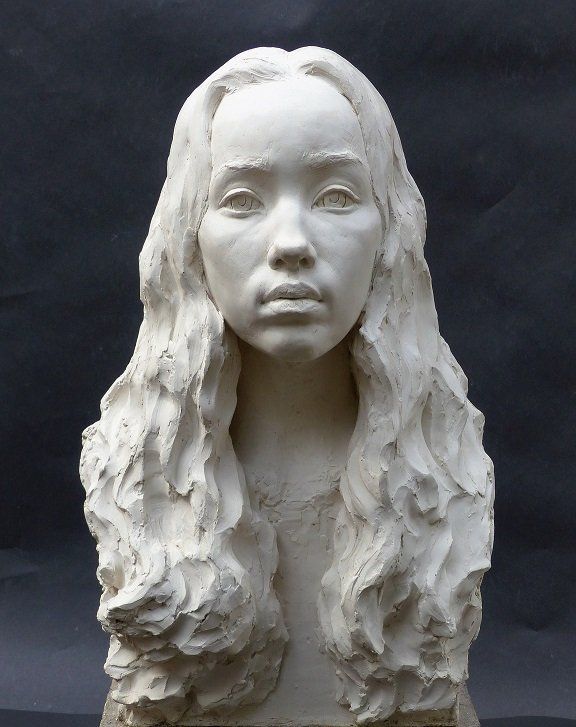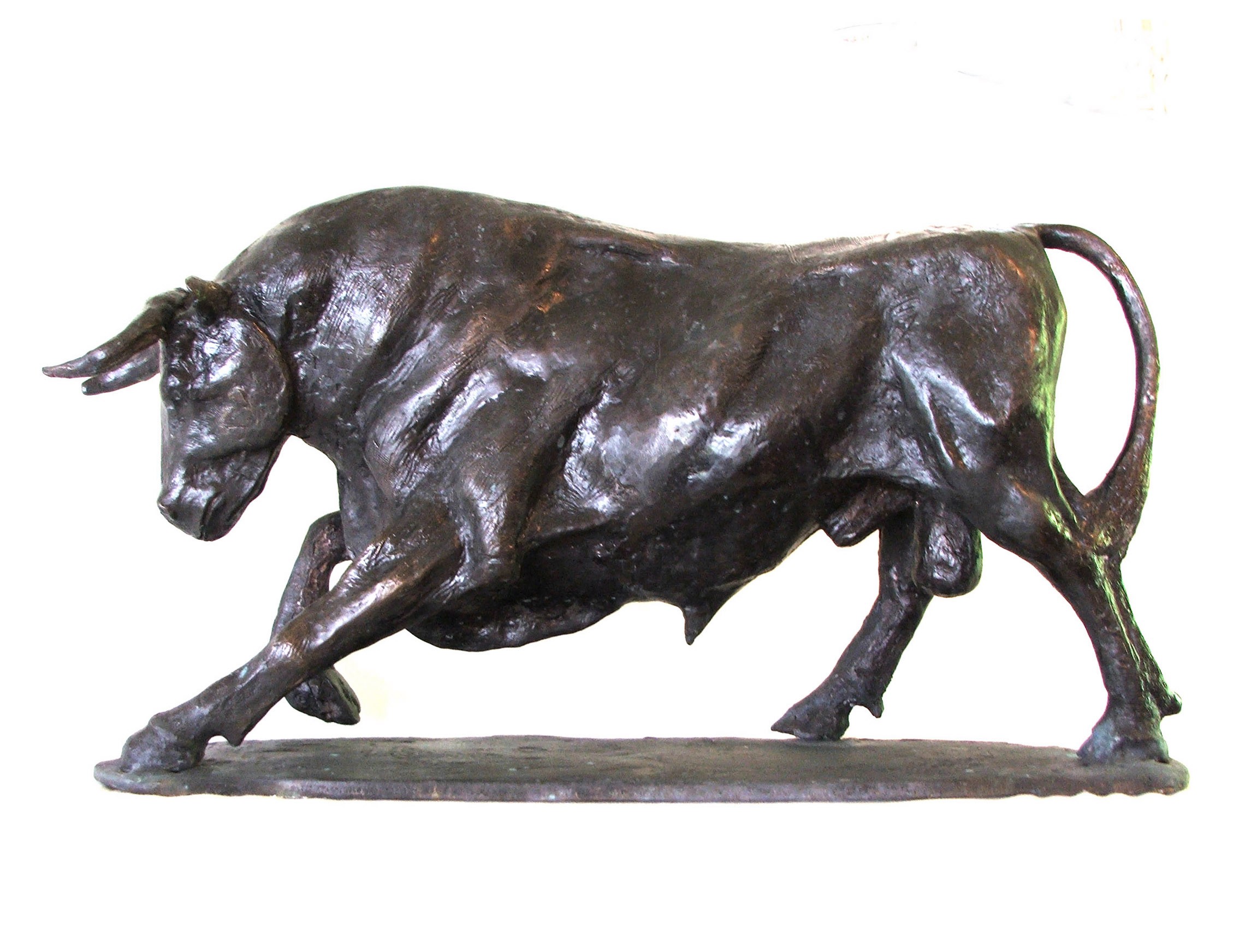Portrait Sculptor: Capturing Essence in Three Dimensions
Wiki Article
Forming the Human Type: Portrayals of the Body in Sculpture
Forming the Human Type: Representations of the Body in Sculpture is an extensive exploration of the artistic depiction of the body throughout history. This exhibition looks into the numerous strategies, designs, and social perspectives that have actually shaped the way musicians have portrayed the human kind in sculpture. From the charming marble sculptures of old Greece to the intricate masterpieces of the Renaissance, from the flamboyant and ornate Baroque and Rococo sculptures to the progressive and abstract expressions of contemporary and contemporary sculpture, this event supplies a captivating journey via the advancement of this timeless art form - Robert C Hitchcock Sculptor. By analyzing the varied analyses and depictions of the body, visitors will obtain a deeper understanding of the creative, social, and social impacts that have formed our assumption of the human form.Old Greek Sculptures

One of the defining attributes of Old Greek sculptures is their focus on proportion. Each part of the body is carefully crafted to be symmetrical to the entire, creating a sense of balance and harmony. The carvers paid cautious interest to every information, from the positioning of muscular tissues to the positioning of limbs, making sure that each figure showed up both graceful and powerful.
The Greeks also valued the idea of idealized beauty. As opposed to portraying the blemishes and flaws of the human form, they sought to develop an idyllic version of reality. The sculptures frequently depicted gods, goddesses, and athletes, with their bodies shaped to perfection. Robert C Hitchcock Sculptor. This idyllic representation of the human type not just well known physical appeal but likewise acted as a means of inspiring and boosting the audience.
Renaissance Masterpieces
Proceeding the expedition of the portrayal of the human kind in sculpture, Renaissance work of arts even more improve the idyllic concept of appeal, structure upon the unified and balanced percentages of their Old Greek precursors. Throughout the Renaissance duration, which spanned from the 14th to the 17th century in Europe, artists looked for to revive the classical ideals of ancient Greece and Rome. They studied and imitated the works of the ancient masters, pursuing a sensible representation of the human body.
His masterpiece, the sculpture of David, exhibits the excellence and elegance that became associated with Renaissance art. Standing at over 17 feet high, the sculpture portrays the biblical hero in a state of tranquility prior to his battle with Goliath.
Another remarkable Renaissance artist was Donatello. His sculpture of Saint George, produced in the early 15th century, showcases the musician's capability to communicate strength and the aristocracy via the human type. The statue shows the epic dragon-slaying saint in a poised and confident position, radiating a sense of heroism.
Renaissance work of arts not only commemorated the physical appeal of the human body yet likewise conveyed much deeper feelings and meanings. Via their precise focus to detail and experienced workmanship, Renaissance carvers boosted the art of sculpture to new elevations, leaving an enduring legacy that proceeds to inspire musicians to this day.
Rococo and baroque Sculpture
Baroque and Rococo sculpture exemplifies the elaborate and luxurious portrayal of the human form during the 17th and 18th centuries. Musicians such as Gian Lorenzo Bernini and Alessandro Algardi developed sculptures that shared movement, typically depicting figures in dramatic presents.
Rococo sculpture, on the other hand, arised as a response to the grandiosity of the Baroque duration. They commonly depicted figures in sensuous and stylish positions, reflecting the lighthearted and wayward nature of the Rococo design.
Both Baroque and Rococo sculpture put a terrific emphasis on the human form, commemorating its appeal and revealing a variety of feelings - Portrait Sculptor. Whether it was the vibrant and powerful figures of the Baroque or the graceful and captivating figures of the Rococo, these sculptures captured the significance of the human experience, leaving an enduring influence on the art globe
Modern and Contemporary Sculpture
The evolution of shaping the human kind proceeds in contemporary and modern-day sculpture. Modern sculpture arised in the late 19th century as a feedback to the transforming political and social landscape.In the 20th century, the increase of abstraction and conceptual art brought new possibilities for carvers. Musicians like Henry Moore and Barbara Hepworth discovered the relationship between kind and room, developing organic and abstracted numbers that challenged conventional ideas of depiction. Moore's monumental bronze sculptures and Hepworth's carved stone works are celebrated for their innovative use products and their capability to stimulate a sense of the body in a non-literal way.
Contemporary sculpture proceeds to push the boundaries of representation and check out new materials and methods. Artists like Antony Gormley and Ron Mueck produce hyper-realistic sculptures that test our assumption of the body, while others, such as Louise Bourgeois and Kiki Smith, make use of the body as an allegory for cumulative and individual experiences. The human kind continues to be an effective topic in sculpture, supplying a platform for artists to explore identity, emotion, and the human problem.
Social Viewpoints on the Body

In the expedition of shaping the human form, the exam of social viewpoints on the body exposes a rich and varied tapestry of representations and interpretations. Throughout background, different societies have actually held distinct beliefs and values regarding the body, resulting in distinctive imaginative expressions - Equine Sculptures. These social viewpoints form the means the human body is portrayed and viewed in sculpture, showing societal norms, religions, and aesthetic suitables
For circumstances, old Greek sculptures commemorated the idealized human form, emphasizing physical beauty and athleticism. In comparison, old Egyptian sculptures focused on the preservation of the body in the afterlife, depicting numbers with inflexible poses and idealized features.
Similarly, social point of views on the human body in African art frequently emphasize communal identification and spiritual ideas (Bronze Sculptures). Sculptures from various African societies illustrate the human body with overstated functions, symbolizing social values and genealogical links. Native societies in the Americas likewise have unique viewpoints on the human body, often showing it in a spiritual context and highlighting the link between human beings and nature
The assessment of cultural point of views on the body in sculpture enables us to obtain insight right into the values, ideas, and looks of different cultures throughout background. It highlights the diversity of human experiences and the methods which art reflects and forms our understanding of the human form.

Final Thought
In verdict, the portrayal of the human body in sculpture has actually progressed in time, reflecting various cultural perspectives and imaginative motions. From the idyllic numbers of Ancient Greek sculptures to the stirring and realistic Renaissance work of arts, and the elaborate information of Baroque and Rococo sculptures, to the abstract and speculative forms of contemporary and modern sculpture. The human body has actually been a subject of fascination and imaginative exploration throughout background, showcasing the diverse interpretations and expressions of the human kind.Shaping the Human Kind: Portrayals of the Body in Sculpture is a comprehensive exploration of the imaginative representation of the human body throughout background. From the splendid marble sculptures of ancient Greece to the complex work of arts of the Renaissance, from the luxuriant and flamboyant Baroque and Rococo sculptures to the progressive and abstract expressions of modern and modern sculpture, this exhibition supplies a fascinating trip through the development of this classic art form. Musicians like Antony Gormley and Ron Mueck develop hyper-realistic sculptures that challenge our understanding of the human body, while others, such as Louise Bourgeois and Kiki Smith, make use of the body as a metaphor for personal and cumulative experiences. The human type remains an effective topic in sculpture, providing a platform for musicians to discover identity, emotion, and the human condition.
From the idyllic numbers of Old Greek sculptures to the reasonable and emotive Renaissance work of arts, and the intricate information of Baroque and Rococo sculptures, to Robert C Hitchcock Sculptor the abstract and speculative kinds of modern and contemporary sculpture.
Report this wiki page